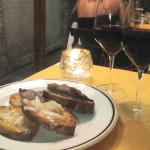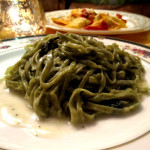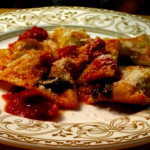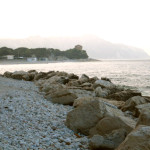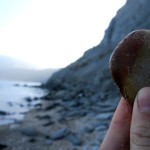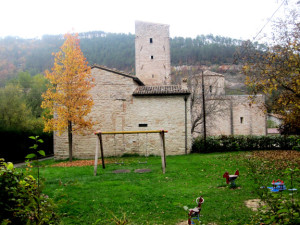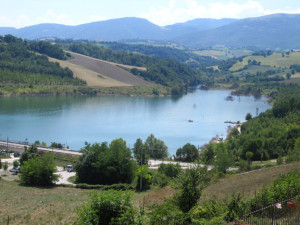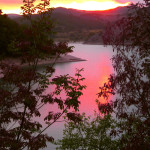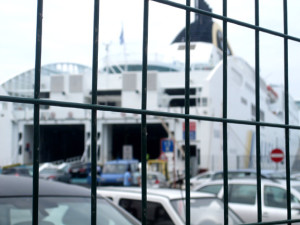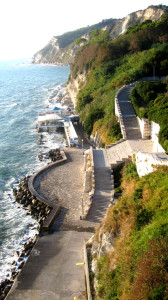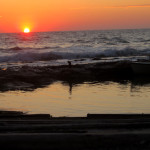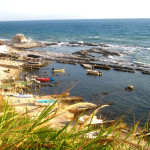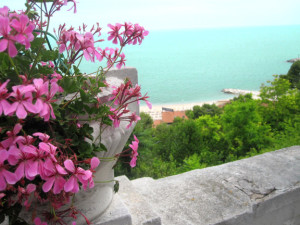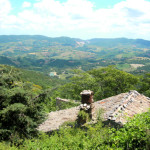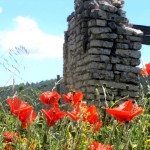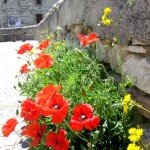MEMORIES: Unfortunatly for us all, this place does not exist anymore! When it comes to restaurants in Ancona, Osteria Teatro Strabacco was our favorite. A restaurant that offered typical Italian food in the middle of the city center, but hidden enough so that it’s not crowded and is frequented only by those that knew of its existence (now you know, but you can’t go), this cozy nook had drawn in names from all over the globe.
 At Strabacco, food hospitality was treated like the theater- every evening, and every meal, was a different scene with different props, backdrops, actors, colors, tastes, smells, and audiences. With its three levels and solely wooden furnishings, even the building itself could be likened to a stage. Add the mass of colorful objects, old photographs, candles, old-fashioned lamps, and plastic figures, and you truly feel like you’re walking back in time (yet somehow eccentrically modern) through a fairytale. And this was all before food even came into consideration.
At Strabacco, food hospitality was treated like the theater- every evening, and every meal, was a different scene with different props, backdrops, actors, colors, tastes, smells, and audiences. With its three levels and solely wooden furnishings, even the building itself could be likened to a stage. Add the mass of colorful objects, old photographs, candles, old-fashioned lamps, and plastic figures, and you truly feel like you’re walking back in time (yet somehow eccentrically modern) through a fairytale. And this was all before food even came into consideration.
The quality of dishes leaving the kitchen was always superb, and the selection of wines was truly remarkable (1,200 of them to pick from!). If asked, the oste Danilo Tornifoglia (known as Kiki to friends and native Ancona-ians) would have taken you downstairs, where you would find an old piano and a wine cellar that was tough to beat when it comes to showcasing the wines of 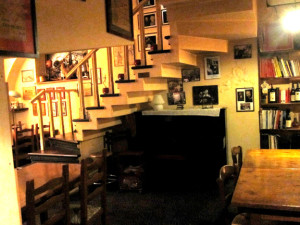 Marche. Both cuisine and wine inventory focus mainly on traditional productions from the region, but there were also rotating specials and unusual twists. Pasta with a minty cream sauce? Bruschetta al lardo? Yes, please, we’ll try it all.
Marche. Both cuisine and wine inventory focus mainly on traditional productions from the region, but there were also rotating specials and unusual twists. Pasta with a minty cream sauce? Bruschetta al lardo? Yes, please, we’ll try it all.
And, is worth adding that their tiramisu was the best that we’ve ever had- and, while traveling the world, we have made an effort to try our favorite dessert every time that the opportunity presented itself.
Whether you are an artist or a professional, need a nice date spot, a casual dinner, or a wine break, Strabacco would have impressed you for sure. Even if you are just passing through the streets, alone and without a destination in mind, come set food inside. Much like a “chef’s table”, there was the special tavolo quattro; one of the large communal tables that was filled with just as many personal stories, laughs, and new friendships as with memories of people (both famous and anonymous) that have sat at its benches and discovered Danilo’s charm.
- Bruschetta al lardo
- Tagliatelle all’ortica con pecorino e menta
- Ravioli ripieni di mozzarella e ricotta di bufala con melanzane e pomodorini
- Tiramisu
Osteria Strabacco
Via Oberdan,2
Tel: 071 56748

